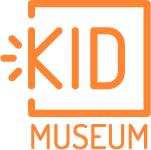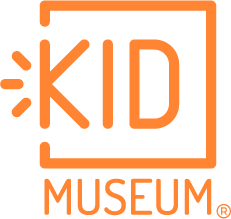
Can math be fun? Yes! Does this translate to real results? Yes, it does. Over the summer, rising 7th graders from two schools that receive Title I funds spent three weeks learning ratios and percentages by designing cardboard carnival games, understanding angles by building and programming robots, and determining probability by coding games. Teachers told us that their students’ “attitudes [towards math] completely changed.”
This is good news at a time when our students’ math scores locally and nationally are so dire. Only a shocking 24% of all Montgomery County middle schoolers are currently on grade level for math and reading combined. For students of color, it’s even more devastating, with only 10% of Black students and 7% of Latino students on grade level. The latest international assessment (PISA) reported a dramatic drop of 13% in U.S. math scores from pre-pandemic levels (the lowest scores in two decades), with similar discrepancies among Black and Latino students and their White and Asian peers.
Clearly, something is not working. But doubling down on pre-pandemic learning approaches is a failing calculation. The U.S. Department of Education agrees, urging new strategies to improve student achievement that include tutoring and increased enrichment programming. Increasing exposure time is a good strategy – even better is introducing innovative approaches that make math accessible, inclusive, and fun.
Only a shocking 24% of all Montgomery County middle schoolers are currently on grade level for math and reading combined.
Math has a reputation for being rigid (curriculum that has remained essentially unchanged for centuries may have something to do with that): only one right answer, learning through rote memorization, as well as the idea that math competency is somehow innate rather than learned, that you are either a “math person” or you’re not. But in fact, math concepts lend themselves to creative problem-solving, curiosity, and exploration – the very concepts we embrace at KID Museum.
Maker Math, piloted over the summer, aligns Common Core Math Standards with hands-on maker learning, adapted from the STEM “invention” curriculum that we’ve developed, tested, and refined over the past ten years. The goals of the program were to increase student engagement and ability, while building their confidence as math learners. Here are the results: 100% of students reported an increase in enjoyment doing math, 82% experienced increased resilience when math seemed hard, and test scores went up by 9%.
Professional development for the teachers who deliver the curriculum is a key factor to programmatic success, as is working closely with schools to address their needs. Educators told us that they welcome innovation, and that this program “re-invigorated” them as teachers. New approaches like these inject a renewed enthusiasm for learning for both students and teachers alike.
Approaching math through project-based maker learning accommodates different learning styles, helping students make sense of math concepts that may be confusing or hard to grasp in the abstract. And as with our STEM-based invention programming, our Mind of a Maker learning philosophy encourages collaboration, perseverance, pursuing new ideas, and respecting the ideas of others – thus developing confidence and a powerful sense of belonging.
After all, there is no such thing as a “math person” – everyone is a math person if given the opportunity. This is especially important for students of color and girls, who often navigate a dearth of role models, expectations, resources, and culturally competent curriculum.
If the current model for teaching math isn’t adding up to student achievement, it’s time for a new equation.

